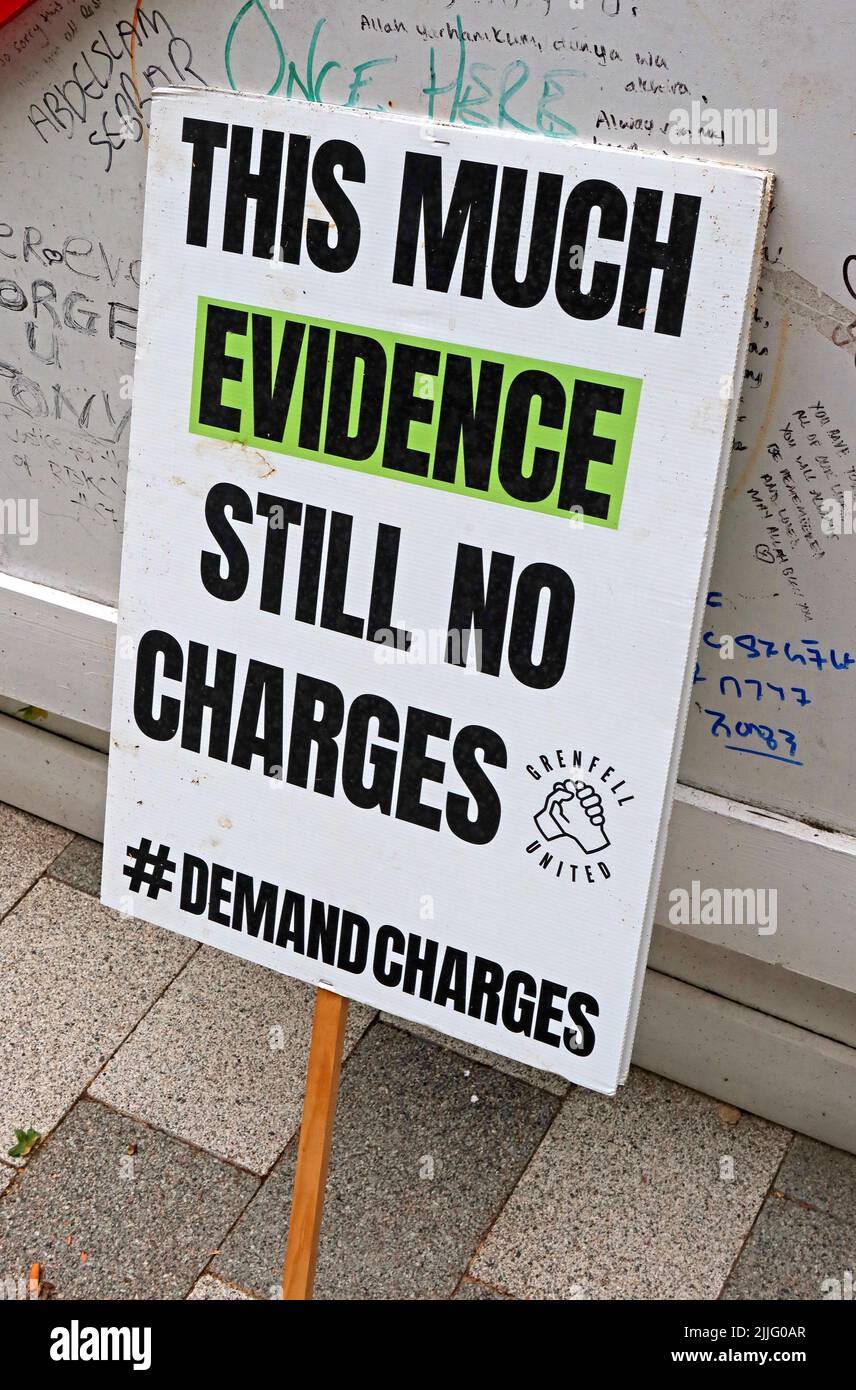Grenfell Tower Fire demonstration placard - This much evidence,still no charges , #DemandCharges

Image details
Contributor:
Tony Smith / Alamy Stock PhotoImage ID:
2JJG0ARFile size:
53.8 MB (2.5 MB Compressed download)Releases:
Model - no | Property - noDo I need a release?Dimensions:
3520 x 5344 px | 29.8 x 45.2 cm | 11.7 x 17.8 inches | 300dpiDate taken:
23 July 2022Location:
Grenfell Road, Kensington and Chelsea,London,England,UK, W11 1TQMore information:
On 14 June 2017, a high-rise fire broke out in the 24-storey Grenfell Tower block of flats in North Kensington, West London, at 00:54 BST. 72 people died, including two who later died in hospital, with more than 70 others being injured and 223 people escaping. It was the deadliest structural fire in the United Kingdom since the 1988 Piper Alpha oil-platform disaster and the worst UK residential fire since World War II. The fire was started by an electrical fault in a refrigerator on the fourth floor. It spread rapidly up the building's exterior, bringing fire and smoke to all the residential floors. This was due to the building's new cladding and the external insulation, since the air gap between them enabled the stack effect. The fire burned for about 60 hours before finally being extinguished. More than 250 London Fire Brigade firefighters and 70 fire engines from stations across London were involved in efforts to control the fire and rescue residents. More than 100 London Ambulance Service crews on at least 20 ambulances attended the scene, joined by specialist paramedics from the Ambulance Service's Hazardous Area Response Team. The Metropolitan Police and London's Air Ambulance also assisted the rescue effort. Five years after 72 people lost their lives in the Grenfell Tower fire, which broke out on June 14, 2017, the UK government has announced plans to ban the type of cladding used to cover the external walls of the North Kensington high-rise. These revised building regulations are to be put into effect in December 2022. The inquiry into the disaster concluded, in its first report in 2019, that this cladding – polyethylene-filled aluminium composite panels, to be specific – was responsible for the fire spreading so quickly..